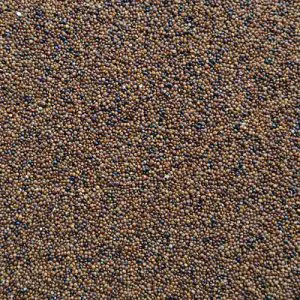Canihua (Chenopodium pallidicaule), sometimes called kaniwa, is a close relative of quinoa. Like quinoa, canihua is an ancient grain from the high Andean region where growing conditions are harsh. Despite these adverse conditions, canihua possesses qualities that gain it membership in the growing list of superfoods coming to us from South America.
Calling canihua a grain is something of a misnomer. Just like quinoa, it is actually a seed that functions as a grain. Its remarkable nutritional density makes it especially valuable in the Andean highlands, where there are so few food resources. Even though canihua is about half the size of quinoa, and referred to at times as ‘baby quinoa’, it can provide 60% of our recommended Daily Intake of iron (4 times that of quinoa) in a single serving. It has a terrific balance of all the amino acids, as well as calcium, and zinc, antioxidants and omegas 3, 6 and 9.

Another interesting characteristic is the fact that canihua does not have the typical protective coating called saponins. This is the protective coating most plants have that can give a bitter taste unless thoroughly washed off. Canihua needs no such rinsing prior to cooking. And of course, it’s gluten free, widening the alternatives available to those with gluten sensitivities.
Higher in protein than quinoa, with loads of dietary fiber and rich phenolic content, this grain merits a place at our dinner table. Indeed, it was regarded so highly by the Incas, that it was reserved for royalty, being consumed only at court.

